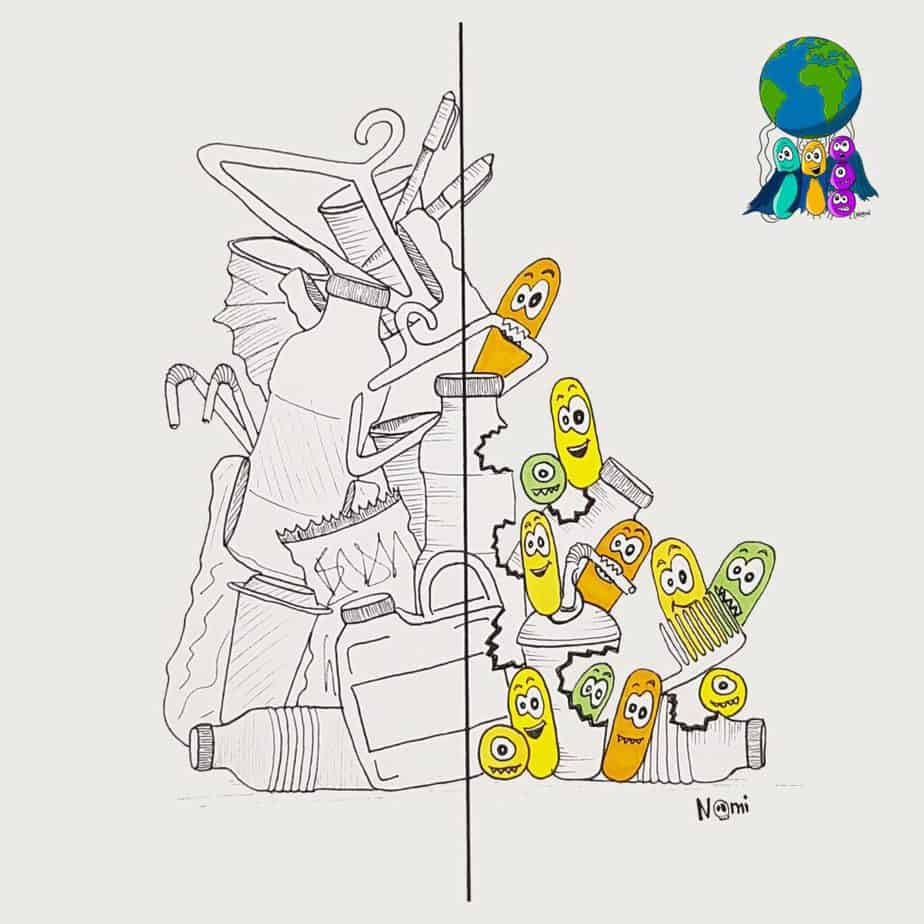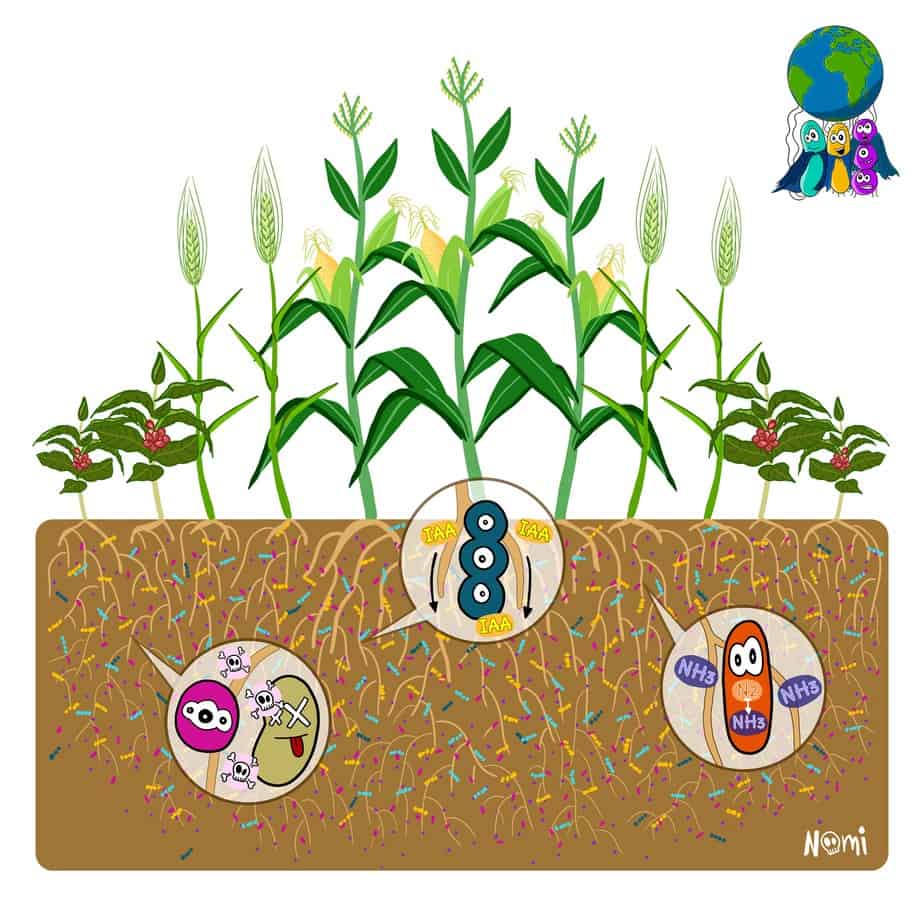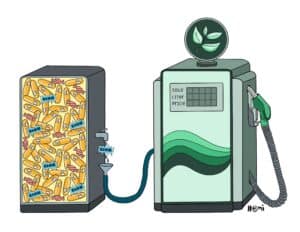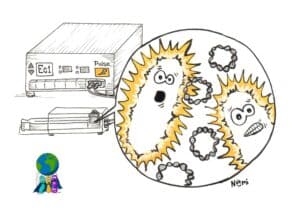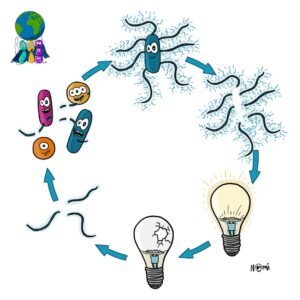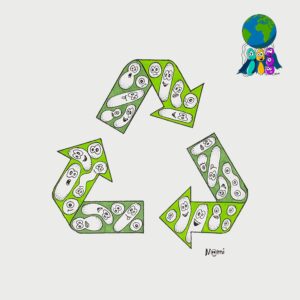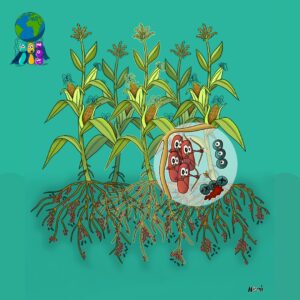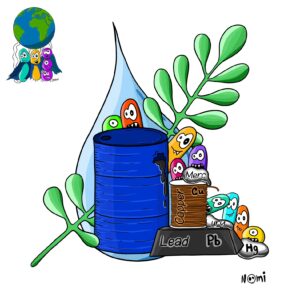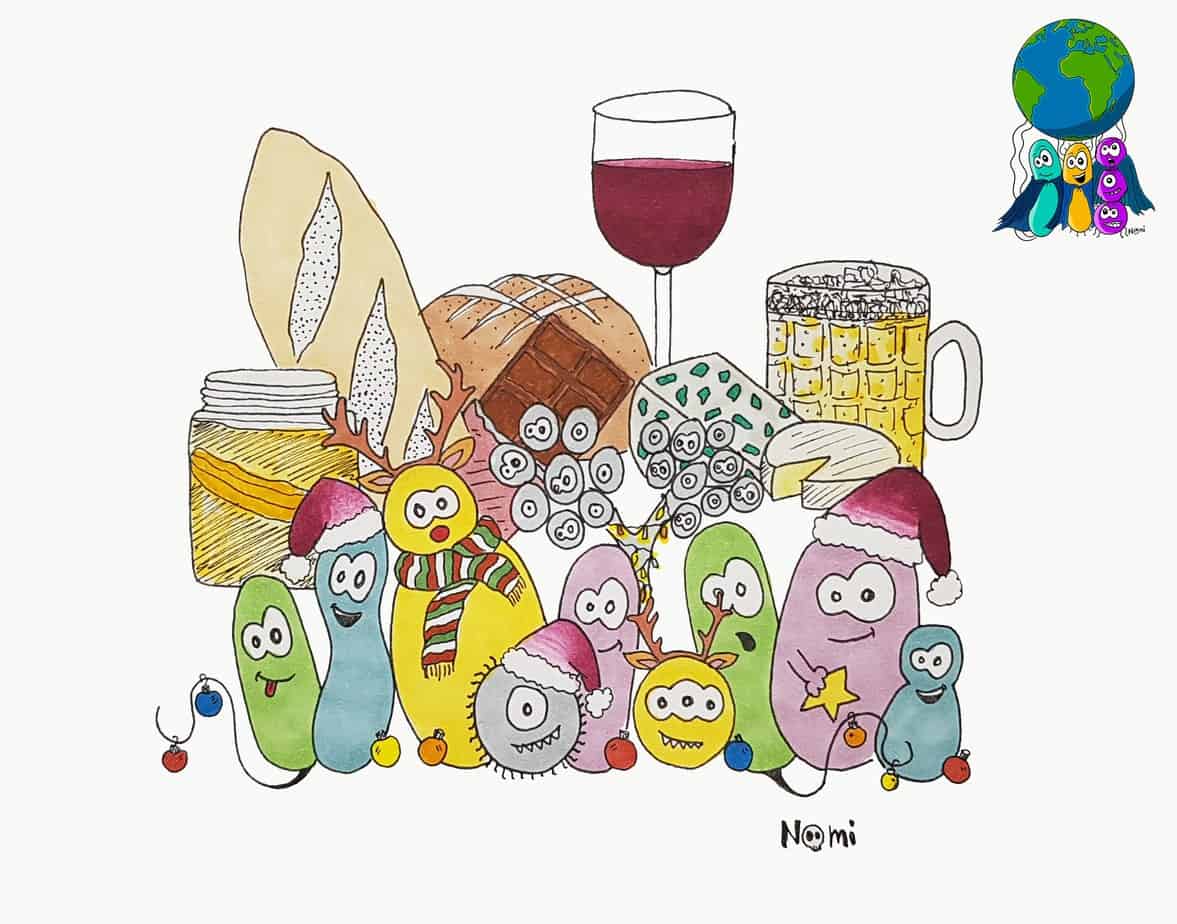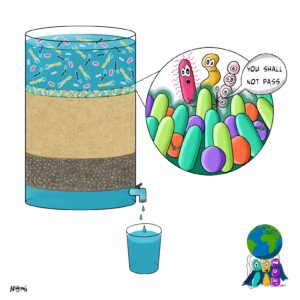Plastics!
Everywhere in the world, you can find plastics, from grocery bags to pens to spandex leggings.
We use plastics because they are lightweight, flexible, and durable.
But their durability is also their biggest drawback. Plastic takes a long time to decompose, which becomes a huge burden for our environment and planet.
The plastic problem
But let’s start by looking at what plastic exactly is.
Plastics are made up of smaller monomer units that link together and form a chain called a polymer. Different monomers have different chemical structures. Different combinations of these plastic monomers make different types of plastics. That’s how a flexible grocery bag and a sturdy toothbrush can both be made from plastic.
It is like a brick building. There are many types of bricks, and different varieties of bricks are combined to build different sorts of buildings.
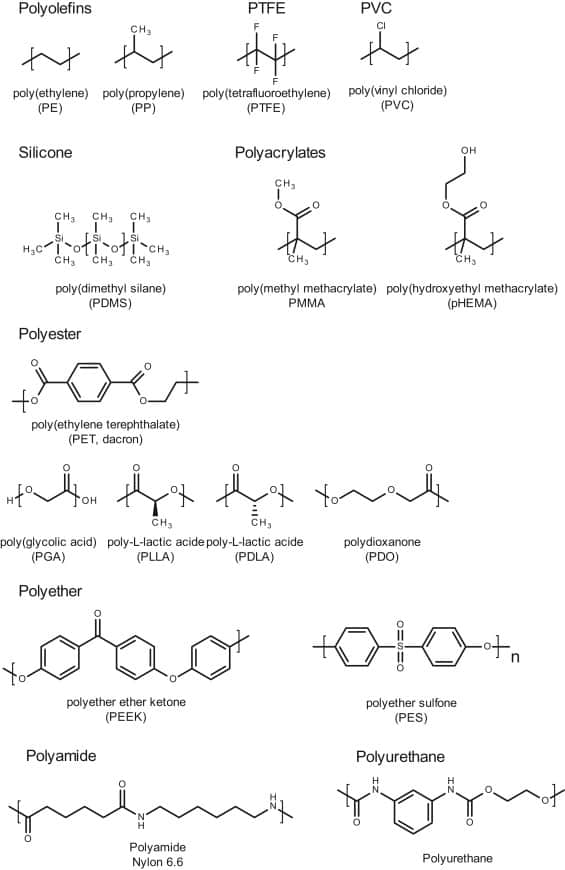
No matter the type of plastic, the links between two plastic monomers are very strong. This is what makes plastic so sturdy but also why it takes so long for plastics to break down naturally.
A typical plastic grocery bag takes 10-20 years to break down while a plastic bottle can take 100-450 years.
Currently, recycling plastics requires a lot of heat and chemicals to break the strong bonds between the monomers. Once those bonds are broken, the monomers can be reused to make something new.
As you can see, the recycling process is very energy-dependent, so we generally manage to recycle less than 10% of plastics. That means most plastic waste ends up burned (12%) or in landfills or oceans (79%) where it can sicken wildlife. One group predicted that 4.8 to 12.7 million metric tons of plastic had ended up in the oceans in 2010 alone! This causes major problems for aquatic life.
Plastic-degrading bacteria to the rescue
Gladly, we have some super bacteria that help us find new ways to degrade and recycle plastic. This will make the whole process easier, greener and less energy-intensive.
The key is plastic-degrading bacteria that have special enzymes to break down different types of plastics. Even though enzymes are proteins that speed up chemical reactions, most of these are fairly slow when it comes to degrading plastic polymers. Many of them still need high temperatures to perform best, which means a lot of energy input for recycling.
But recently, scientists discovered the bacterium Ideonella sakaiensis 201-F6 that can ‘eat’ plastic.
Yes, you read correctly.
Ideonella sakaiensis secretes an enzyme that breaks down the links between plastic monomers. These smaller monomers give the bacterium energy and building blocks. Just like how humans cut bread into slices to make it easier to eat, Ideonella sakaiensis breaks down plastic into smaller pieces to eat.
But Ideonella sakaiensis isn’t the only bacterium that loves eating plastic.
A recent study found that a strain of Pseudomonas eats polyurethane, another commonly used plastic polymer.
Other microbes like eating plastic too
And it’s not only bacteria that can be found in plastic-rich environments to degrade our plastic pollution. Also, other microorganisms evolved to eat plastic.
Isolated from landfill soil, the fungi Trichoderma viride breaks down plastic found in the landfill. The marine fungus Zalerion maritimum degraded small pieces of plastic, called microplastics, found throughout the oceans.
Harnessing microbial superpowers
Gladly, researchers are well on the way to using the power of microbes to help recycle plastics.
The bacterium Ideonella sakaiensis uses the enzyme PETase to break down a common type of plastic called polyethylene terephthalate (PET). Scientists hope to use the bacteria with their PETase enzymes in bioreactors to degrade plastic polymers. This would reduce the energy input needed for recycling.
But to achieve this, scientists need to better understand how PETase binds and degrades PET. For this, they determined the 3-D structure of the enzyme.
Based on these data, scientists tried to increase the efficiency of PET degradation, for which they slightly changed the protein structure of the enzyme. This already improved the degradation rate of the enzyme, but they continue to modify and improve PETase activity. Hopefully, this ongoing improvement will bring us a much more efficient plastic-degrading PETase enzyme that we can use for recycling plastics.
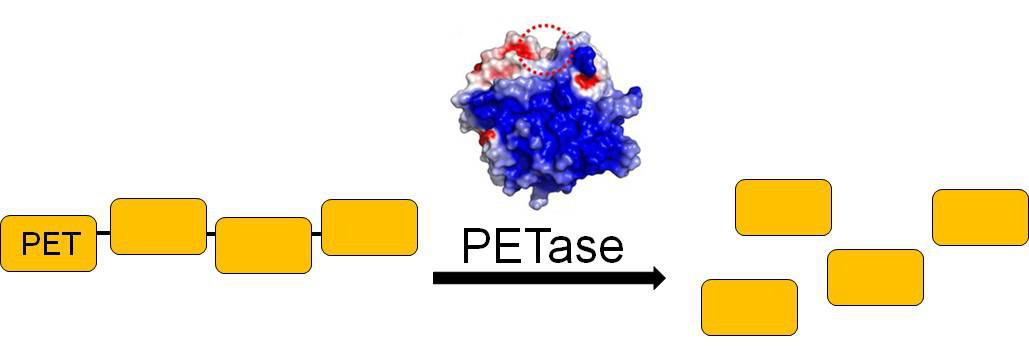
The plastic-degrading power of microbial communities
Additionally, communities of bacteria and microbes have the possibility of acting as plastic-degrading bioreactors. Researchers found a marine microbial biofilm that broke down weathered plastics. They then added bacteria, which they already knew would degrade plastic, to the biofilm. This addition increased the plastic degrading efficiency of the community.
And it looks as if nature already evolved a system to address our plastic waste. A bacterial community isolated from a plastic-processing plant degraded plastic at higher levels as compared to a formulated community of laboratory bacterial strains.
Why was that?
Well, when scientists looked at the genes of the native community, they found new bacterial strains. And these strains of bacteria most likely evolved to degrade plastic better than known strains.
Just imagine what types of plastic-degrading microbes scientists may find if they continue to look for them!
Let’s hope that one day we can implement microbial enzymes and communities in plastic recycling processing.
A cleaner future thanks to plastic-degrading bacteria
Plastics continue to pollute our planet. As these items fill landfills and oceans, they break into smaller and smaller pieces that are easily consumed by and sicken wildlife. Small microplastics can act as a surface for pathogenic and antibiotic-resistant bacteria to live on and spread. And microplastics have even been found in human drinking water.
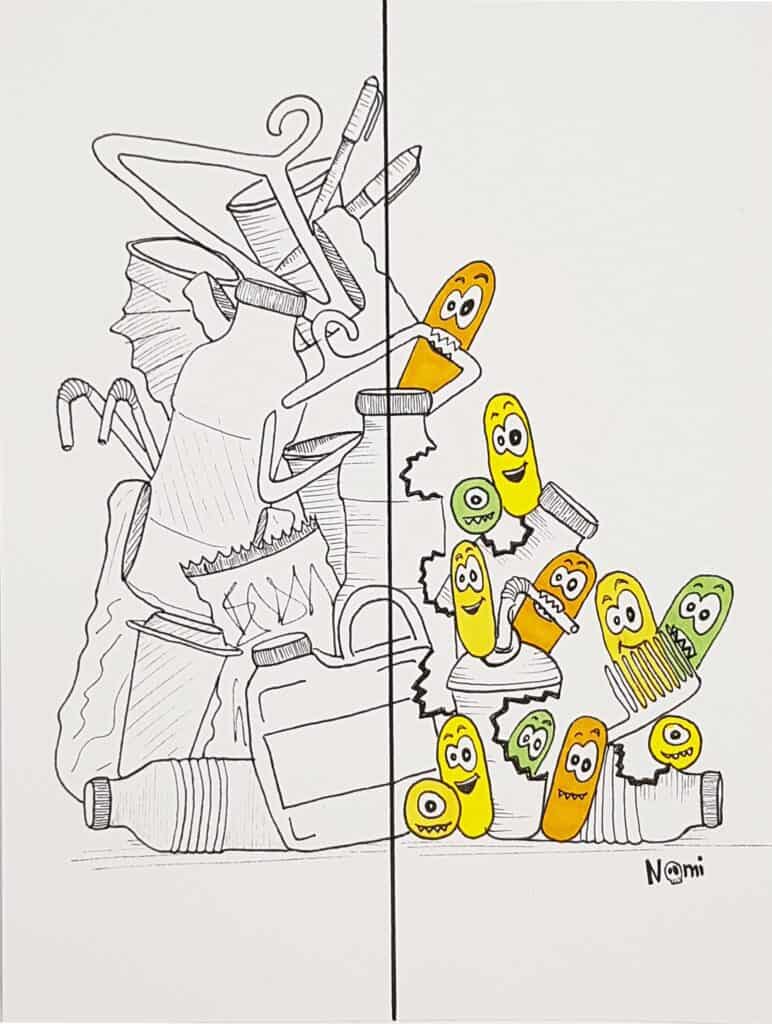
Plus, the more plastic we lose to pollution the less plastic is available to recycle and reuse. This means more plastic needs to be produced using non-renewable fossil fuels. And we all know that fossil fuels are not sustainable as they contribute to air and water pollution as well as climate change. All of these factors compound the present plastic problem the planet faces today.
With more research, let’s hope we can find more bacteria that are able to degrade plastic polymers. By using microbes and microbial enzymes, possibly we can reduce overall plastic waste. However, even with microbes’ help, we can all play a part and reduce our plastic consumption. That means, buying reusable over disposable products and recycling plastics appropriately.
Along with microbes, we can save the planet!
Take-away messages from this week’s article
- Plastic pollution is a major problem for the planet
- Plastic is hard to break down, but some bacteria degrade plastic thanks to their special enzymes
- Communities of bacteria and microbes can work together to degrade and recycle plastic

